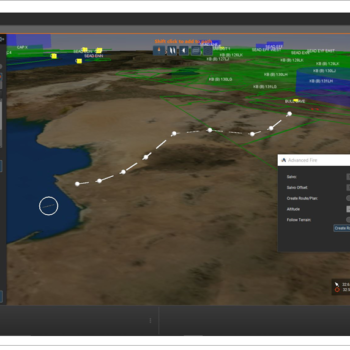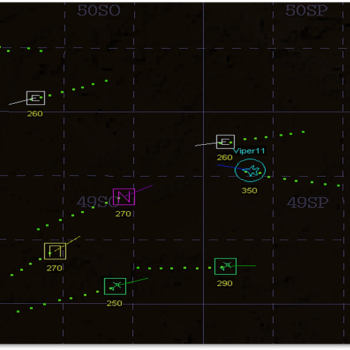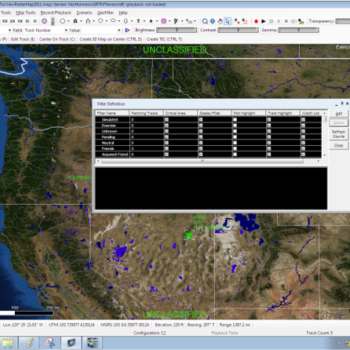About TORCC
Global C2 Integration Technologies has teamed with three industry leading software manufactures to integrate best-of -breed components and offer an operational to tactical Command and Control (C2) system. This system supports open architecture standards in industry today, it is functionally resilient with redundant operations and is easily transportable for survivability. Most importantly, TORCC is currently deployed in multiple theaters, supporting Commander’s Joint All Domain C2 (JADC2) and Agile Combat Employment (ACE) requirements.
The major components of TORCC include the Battlespace Command & Control Center (BC3) with its Multi-Source Correlator Tracker (MSCT) as the fusion engine and the MSCT Display for human-machine interface, the Air Defense Systems Integrator (ADSI), which provides the tactical data-link backbone, as well as a Live, Virtual, Constructive (LVC) software suite to allow operators to train as they fight. Also included with TORCC is a fully integrated global Automatic Dependent Surveillance-Broadcast (ADS-B) service and responsive TORCC Support Center (TSC) to address technical issues as they arise.



Vision
Field an Operational to Tactical C2 System that is resilient, mobile and supports open architecture standards.
MISSION
A TORCC system fulfills requirements for theater C2 systems providing ground radar and datalink integration, data fusion and correlation, common operational picture (COP), situation awareness (SA), data link management, collaboration features, robust simulation system to train operators, radio system interfaces, and tactical control capability for joint and combined air forces.
INNOVATION
The integrated TORCC system is built on an open architecture COTS platform with virtualized software comprised of well-established operational C2, data link, and simulation software components
BC3
Battlespace Command & Control Center (BC3) is designed for both Tactical and Operational C2 functionality, providing users with tailored operational capabilities. Its systems enable information to flow accurately and effectively between ground controllers, aircraft, and Air Defense Artillery (ADA) to direct resources efficiently, and bring about the objectives of Joint Force Commanders. These systems eliminate or reduce information bottlenecks and truly become force multipliers.
BC3 is a system of systems, comprised of products which are also marketed individually outside of a BC3 configuration. BC3 core components comprise the C2 engine for USAF CRC and USMC CAC2S air control system programs of record, and are fielded in a number of other U.S. and international operational, test, and training environments.
The BC3 Multi-Source Correlator Tracker (MSCT) data processing application provides track synthesis, track correlation, and track management from dissimilar sources to include plot- and track-level sensors and Tactical Data Links (Link 16). The MSCT Display, based on the Raytheon Solipsys Tactical Display Framework (TDF) visualization product, provides track and battlespace data to operators in both 2-Dimensional and 3-Dimensional views.
ADSI
Air Defense Systems Integrator (ADSI) provides TORCC a proven, cost effective, USG certified TDL forwarding gateway. With more than 1,600 systems installed worldwide, the combat-proven ADSI remains unmatched. The newest ADSI system significantly increases the warfighter’s interoperability with 32 simultaneous and dynamically reconfigurable TDLs, tested and reliable, with an increased track capacity of 16,000 tracks. Most importantly, the completely revamped user interface greatly improves the entire ADSI user experience, from system configuration to system operation.
Live, Virtual, Constructive (LVC) Suite
Supporting the warfighter’s desire to train as they fight, TORCC’s fully integrated LVC software suite allows users to employ their organic TORCC system whether conducting live missions, local unit simulation training, or virtually integrating with units anywhere in the world.
ASCOT – SONOMARC – VADAAR
Advanced Simulation Combat Operations Trainer (ASCOT): ASCOT is a real-time interactive simulation tool that efficiently manages the entire battlespace from a single ship close air support (CAS) missions to multi-axis, multi-ship combined operations. Multiple systems can be networked together at a single site or multiple sites worldwide for dynamic large-scale joint and coalition exercises. With ASCOT’s user-friendly interface, operators can fully control an entity’s weapons and sensors or choose the auto-fire mode, where the entity will automatically detect and engage opposing forces. The flexibility of ASCOT gives Exercise Directors and Instructors the ability to control exercise tempo and dynamically direct the exercise focus to meet specific training needs.
Sonomarc: Sonomarc’s analog to digital translator gives users the ability to connect operational radio equipment in a synthetic environment without compromising live connections. Sonomarc’s audio generator provides realistic audio and data communication effects within a synthetic environment, including line-of-sight degradation, pre-recorded and dynamic jamming, antenna location considerations, and environmental background noises. Additionally, Sonomarc gives instructors complete control over radio frequencies, volume control, intercoms and injects, and the introduction of malfunctions for connected platform radios.
Video Audio Data After Action Review (VADAAR) Live, Virtual, and Constructive (LVC): VADAAR-LVC is a network-based mission recording, monitoring, and debriefing system that records and replays video, audio, and data streams from multiple sources while maintaining synchronization to recreate an operator’s experience in its entirety.
ADS-B
The Automatic Dependent Surveillance-Broadcast (ADS-B) world wide air track service provides a 24/7 data stream of commercial aircraft information fed directly into the MSCT which is then correlated with organic sensor and TDL information. The integrated user interface can filter reported tracks to a specified area in order to reduce overall bandwidth usage. A local antenna provides line-of-sight ADS-B coverage if an internet connection is unavailable. This service provides expanded, cooperative air surveillance coverage well beyond existing sensors and will work with new or existing MSCT users.